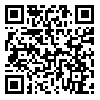Semi-Annual
Back to the articles list |
Back to browse issues page
1- Faculty of Visual Arts, Tabriz Islamic Art University,Tabriz, Iran , k.mirzaee@tabriziau.ac.ir
2- Faculty of Visual Arts, Tabriz Islamic Art University,Tabriz, Iran
2- Faculty of Visual Arts, Tabriz Islamic Art University,Tabriz, Iran
Abstract: (1789 Views)
Sultan Mohammad Naqqash, an outstanding artist of the Safavid period, has left a deep impact on Iranian art by creating beautiful and imaginative works. Gaston Bachelard, a French theorist, emphasizes the connection between artistic imagination and the fundamental elements of nature (water, fire, earth, and wind) and introduces imaginative criticism as a tool for analyzing the hidden layers of imagination in art. This research focuses on the study of four famous paintings of Sultan Mohammad Naqqash, including "The Ascension of the Prophet", "Court of Kiyomarth", "Death of Zahhak", and "Century Celebration" from the perspective of Gaston Bachelard's theory. Therefore, the study seeks to analyze the role of the four elements in selected works of Sultan Mohammad the Painter and identify the dominant element in these works.The emergence of material imagination in Sultan Mohammad's creativity can be attributed to his consideration of the subjects of his paintings, which often reference religious and mythological themes. He has strived to choose the dominant element in his artworks accordingly.These findings interaction between imagination and natural elements is not only a tool for creating art but also a driving force in shaping human and cultural experiences.The soil element is present as the most dominant element in the works of Sultan Mohammad Naqqash and reflects the inner world of the artist and his time.In this way, his works serve not only as visual representations but also as portals to a deeper understanding of life, the universe, and the intricate connections that bind humanity to the natural world.
Send email to the article author
| Rights and permissions | |
 |
This work is licensed under a Creative Commons Attribution-NonCommercial 4.0 International License. |



